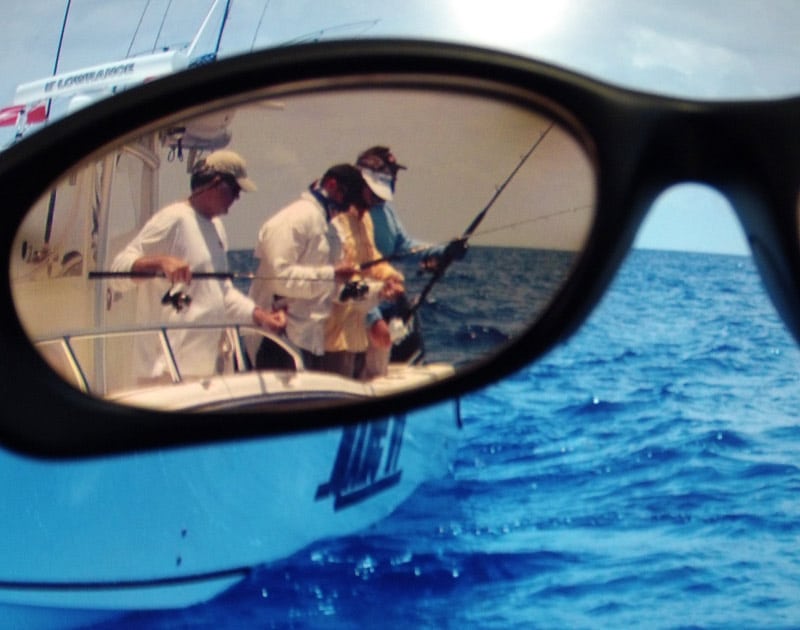
Prescription sunglasses
Like most anglers, I enjoy** sight casting to fish** — an activity fraught with nervous excitement and even anxiety, but full of soul-mending gratification. To properly sight cast, an angler needs good vision aided by properly polarized sunglasses.
I thought I had both. Turns out I didn’t.
During the last month, I’ve used a pair of polarized prescription sunglasses, and my sight-fishing world has changed. I put those glasses on and wow, it was like seeing in another dimension. On the water, I found fish quickly and effectively guided others to cast.
I kept hearing, “Hey, good eyes!” Well… finally. Here’s what happened:
For about the last decade, I’d been using contact lenses to correct my distance vision. When sight casting, I added a pair of Costa silver-mirror 580 amber lenses in Fathom frames.
I spotted fish with that combination, for sure. But whenever a younger angler came aboard, I felt like a blind bat.
At about the same time, I took some eye exams with my contacts and my regular glasses. I was surprised to learn that my vision was much better with glasses. That prompted me to order a test pair of prescription Costas in the above configuration — now available in a lighter plastic (580P) vs. glass lens. Once I had them, the results were so dramatic that I had to ask Costa’s director of prescription sales — Renato Cappuccitti — “what gives?”
Part of the reason I could not see as well with contacts relates to my mild astigmatism, Cappuccitti told me. “There’s that percentage of people who don’t notice the difference” between contacts and glasses, he says. “When prescriptions get more complicated, that’s where you notice.”
About 75 percent of people who need vision correction have a mild astigmatism, Cappuccitti says. Contacts can correct about half of those cases “fairly well,” he says, but the rest are apparently like me. …Who knew?
“We use a manufacturing technique that lets us correct your vision up to 10 times more accurate than what a contact lens can do,” he says. “What you see in the doctor’s office is what you see in the glasses, versus having a compromise.”
Cappuccitti says Costa uses a manufacturing technique that takes into account that the wearer will use the entire surface of the lens. The company takes great pains to work the distortion out of the periphery of the glass or plastic.
Cappuccitti accedes that most high-performance polarized-sunglass makers use some kind of special procedure to improve optics. Each also has its own theories on what makes quality shades, including coatings, polarization film and special materials.
Glasses also correct one other traditional problem for contact wearers: Wind dries out your contacts, creating irritation and further inhibiting vision.
Prescription sunglasses do cost more than non-prescription sunglasses, starting in the 300-plus dollar range for single-lens correction and jumping to $700 or more for progressive (no-line bifocal) lenses. And prescriptions can change over time, requiring new glasses. But you can save some money ordering fewer pairs of contacts.
“You pay more for technology, but technology pays you back,” Cappuccitti says. “It gives you vision you didn’t have before.”
And that’s a major factor for serious sight casters.






